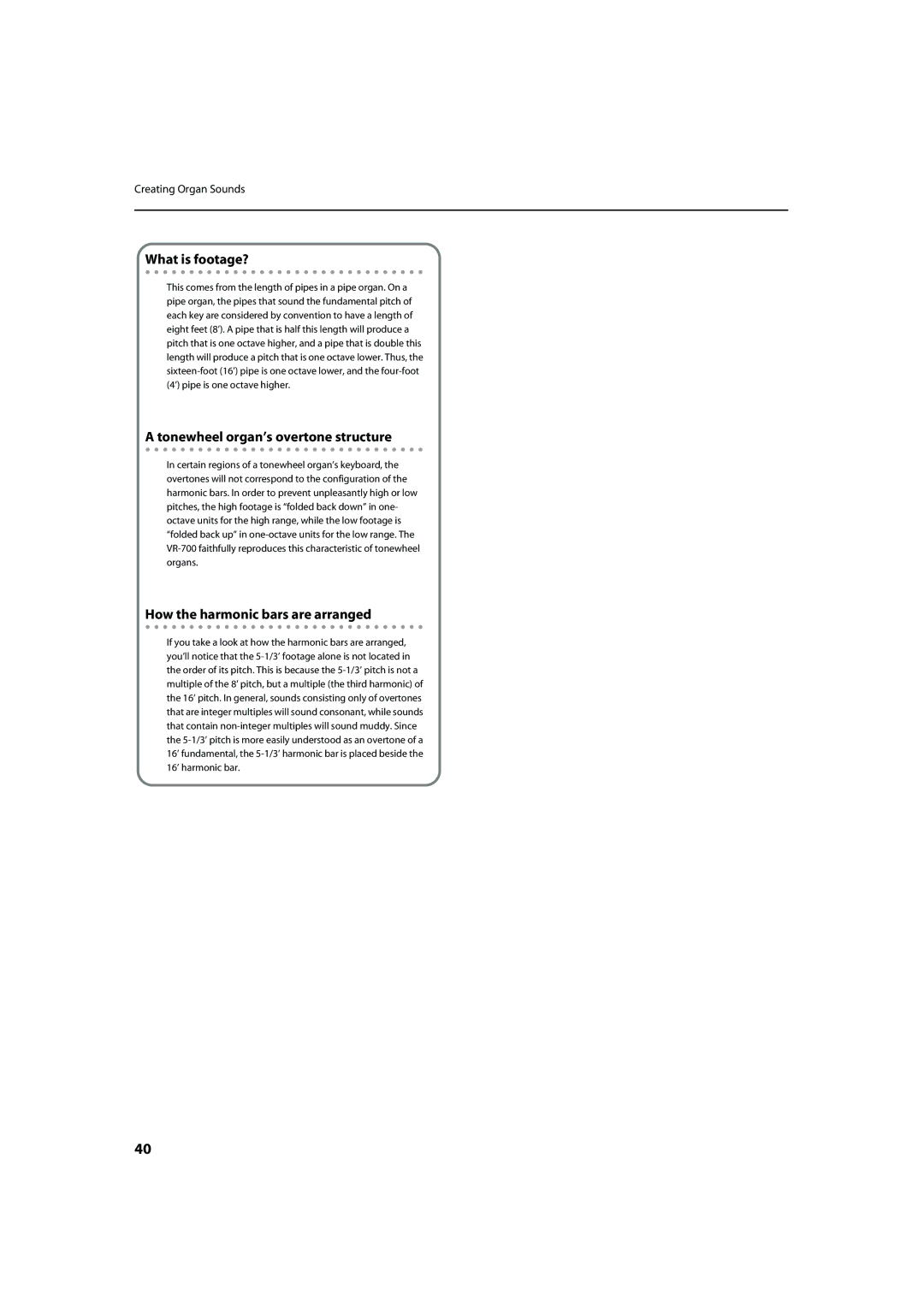
Creating Organ Sounds
What is footage?
This comes from the length of pipes in a pipe organ. On a pipe organ, the pipes that sound the fundamental pitch of each key are considered by convention to have a length of eight feet (8’). A pipe that is half this length will produce a pitch that is one octave higher, and a pipe that is double this length will produce a pitch that is one octave lower. Thus, the
A tonewheel organ’s overtone structure
In certain regions of a tonewheel organ’s keyboard, the overtones will not correspond to the configuration of the harmonic bars. In order to prevent unpleasantly high or low pitches, the high footage is “folded back down” in one- octave units for the high range, while the low footage is “folded back up” in
How the harmonic bars are arranged
If you take a look at how the harmonic bars are arranged, you’ll notice that the
40
